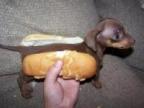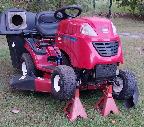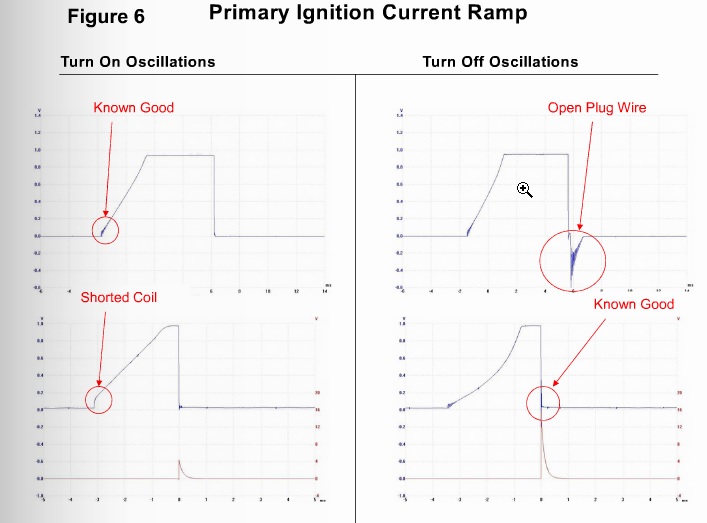*** Restricting New Posts to SD Premium Members ONLY *** (09 May 2025)
Just made a new account? Can't post? Click above.
A place to discuss hardware/software and diagnostic procedures
Ignition Coil primary current ramp
- Gary B
-
 Topic Author
Topic Author
- Offline
- Senior Member
-

Less
More
- Posts: 71
- Thank you received: 9
9 years 1 month ago #2215
by Gary B
Ignition Coil primary current ramp was created by Gary B
Forgive me if this has been discussed before, I am about halfway through the Engine Performance Diagnostics (book and premium channel) and I am really curious why the primary ignition coil current ramp just drops like a rock on the falling edge and stays there. There's no, or none that I have noticed in the videos, oscillation or bounce, no dip below zero, etc. Are they using snubber diodes or something? It just seems to me with all that back EMF there ought to be some decay and oscillation.
Thanks in advance,
Gary
Thanks in advance,
Gary
Please Log in or Create an account to join the conversation.
- Noah
-

- Offline
- Moderator
-

- Give code definitions with numbers!
Less
More
- Posts: 4935
- Thank you received: 1100
9 years 1 month ago #2219
by Noah
"Ground cannot be checked with a 10mm socket"
Replied by Noah on topic Ignition Coil primary current ramp
Hi Gary. I moved this to the Diagnostic Tools & Techniques section. I think you'll get more answers over here.
Good question! If I had to guess, I believe there are no oscillations at the end of the ramp because the ramp represents amperage, current flow.
So where on a voltage waveform we would see oscillations and spikes associated with the effects of the magnetic field, on a current waveform, when we turn off the coil current stops. That's it. There is no "left over" amperage once we stop charging the coil. The "work" has been done.
I may be way off, I'd like to hear some of the masters weigh in on this topic.
Good question! If I had to guess, I believe there are no oscillations at the end of the ramp because the ramp represents amperage, current flow.
So where on a voltage waveform we would see oscillations and spikes associated with the effects of the magnetic field, on a current waveform, when we turn off the coil current stops. That's it. There is no "left over" amperage once we stop charging the coil. The "work" has been done.
I may be way off, I'd like to hear some of the masters weigh in on this topic.
"Ground cannot be checked with a 10mm socket"
Please Log in or Create an account to join the conversation.
- Andy.MacFadyen
-

- Offline
- Moderator
-

Less
More
- Posts: 3353
- Thank you received: 1037
9 years 1 month ago #2227
by Andy.MacFadyen
" We're trying to plug a hole in the universe, what are you doing ?. "
(Walter Bishop Fringe TV show)
Replied by Andy.MacFadyen on topic Ignition Coil primary current ramp
Very good question I had to think about this one, the way I looked on it was to think of old fashioned "make & break" contact breaker ignition.
The way I look at is if the circuit is open there can be no current flow in a circuit.
The same goes for the secondary if the spark is not actually jumping the gap there is no current flowing.
Might be an over simplification but it works for me.
The way I look at is if the circuit is open there can be no current flow in a circuit.
The same goes for the secondary if the spark is not actually jumping the gap there is no current flowing.
Might be an over simplification but it works for me.
" We're trying to plug a hole in the universe, what are you doing ?. "
(Walter Bishop Fringe TV show)
Please Log in or Create an account to join the conversation.
- Tyler
-

- Offline
- Moderator
-

- Full time HACK since 2012
Less
More
- Posts: 6052
- Thank you received: 1523
9 years 1 month ago - 9 years 1 month ago #2250
by Tyler
Replied by Tyler on topic Ignition Coil primary current ramp
Last edit: 9 years 1 month ago by Tyler.
Please Log in or Create an account to join the conversation.
- Andy.MacFadyen
-

- Offline
- Moderator
-

Less
More
- Posts: 3353
- Thank you received: 1037
9 years 1 month ago #2257
by Andy.MacFadyen
" We're trying to plug a hole in the universe, what are you doing ?. "
(Walter Bishop Fringe TV show)
Replied by Andy.MacFadyen on topic Ignition Coil primary current ramp
Food for thought
" We're trying to plug a hole in the universe, what are you doing ?. "
(Walter Bishop Fringe TV show)
Please Log in or Create an account to join the conversation.
- Noah
-

- Offline
- Moderator
-

- Give code definitions with numbers!
Less
More
- Posts: 4935
- Thank you received: 1100
9 years 1 month ago #2273
by Noah
"Ground cannot be checked with a 10mm socket"
Replied by Noah on topic Ignition Coil primary current ramp
Cool, thanks for posting that!
"Ground cannot be checked with a 10mm socket"
Please Log in or Create an account to join the conversation.
- Gary B
-
 Topic Author
Topic Author
- Offline
- Senior Member
-

Less
More
- Posts: 71
- Thank you received: 9
9 years 1 month ago #2275
by Gary B
Replied by Gary B on topic Ignition Coil primary current ramp
interesting... as we discuss this I realize that despite having what should be adequate electronics education, I don't believe that I could clearly explain the difference between current flow and voltage. When I was a kid my Dad taught me voltage was like the pressure in a pipe and the current was like the volume of the flow. Current flow, as I understand is the actual movement of the electrons, but what exactly is voltage? I don't remember any of my instructors clearly explaining the difference. Isn't voltage described as "Potential" sometimes?
This, as I think about it, sounds much like the age old question... "so, what is the difference between torque and horsepower, exactly?" lol
This, as I think about it, sounds much like the age old question... "so, what is the difference between torque and horsepower, exactly?" lol
Please Log in or Create an account to join the conversation.
- Andy.MacFadyen
-

- Offline
- Moderator
-

Less
More
- Posts: 3353
- Thank you received: 1037
9 years 1 month ago - 9 years 1 month ago #2287
by Andy.MacFadyen
" We're trying to plug a hole in the universe, what are you doing ?. "
(Walter Bishop Fringe TV show)
Replied by Andy.MacFadyen on topic Ignition Coil primary current ramp
Horse power & Torque is one of those topics where explaining it in both the old Imperial/US units and Metric at the same time adds complication. In very simple terms Torque is the force an engine can exert Power is how fast the engine can produce work energy , really a combination of Torque and RPM.
The full explanation is.
Starting with Torque --- Torque is a force acting through a lever, exactly the same as a wrench/spanner/torque wrench --- to loosen a tight nut you can either use a short wrench and a lot of muscle force or long breaker bar and much less force. Torque is the force exerted multiplied by the length of the lever, so the offical units are Pounds Feet or Newton Metres. Like force you can extert a torque with or without any movement. In automotive terms, car brakes exert a torque on wheel to slow the car down but if you park the the car on a hill the parking brake must still apply a torque to the wheel to stop it rolling away.
Power "Horse Power" or " Killo Watt" is the ammount of work done in a given time. James Watt invented the Horse Power because he wanted a way for his customers to compare the steam engines he was selling with the work a horse could do. If four horses could plow a field in a single day an 8 horse power engine James Watt claimed could do it in half a day.
To measure Horse Power or Watts you need measure both the work being done AND how quickly it is done.
Work is Force times the distance through which the forces moves. Another word for Work is Energy.
Using metric units because it is easier, the metric unit of work is the Joule. A Joule is 1 Newton moving through a distance of 1 metre.
Consider this you need to push a car and it needs push a force of 100 Newtons (about 25 Pounds force) to keep it moving. If you move the car through 1 Metre you have done 100 Joules of work, if you move it for a distance of 10 Metres you have done 1,000 Joules of work.
Another name for 1,000 Joules is a Kilo Joule.
Exactly the same applies to work done by Torque . Work (energy) is still force times distance, so if you are tightening down an cylinder head bolt the energy or work you do is the force your hand inapplies to the wrench times the distance your hand on the end of the bar moves round the circular path. Working out the distance round the circular path is done the same way as you work out the diametre of any circle pi times diametre. Using Torque simplifies things a bit because if you know the Torque you already have the radius and the force.
Power is simply how quickly you, a horse or an engine can do a given amount of work -- how many fields Watt's plow horse could plough in a day.. So power is force x distance/time or for a rotaing shaft torque x angular speed.
A Watt is a Joule per Second, a 10 kW (roughly 13.5 hp) engine can do 10 Joules (10 Newton Metres) of work per Second.
To work out Power from Torque you need to know the RPM the Torque is being developed at.
So if a 1.4 litre engine develops a torque of 100 Newton Metres at 6000 RPM.
To work out the power in the metric system we first need to devide by 60 to convert RPM into Revs/Second
6000 RPM = 100 Revs/Second.
We next need to convert the Revs/second into Angular Velocity to do this we simply multiply by 2 times pi.
So our engine's power in Watts is 100x100x6.28 = 62,800 watts or 63 KW roughly 84 horse power.
The full explanation is.
Starting with Torque --- Torque is a force acting through a lever, exactly the same as a wrench/spanner/torque wrench --- to loosen a tight nut you can either use a short wrench and a lot of muscle force or long breaker bar and much less force. Torque is the force exerted multiplied by the length of the lever, so the offical units are Pounds Feet or Newton Metres. Like force you can extert a torque with or without any movement. In automotive terms, car brakes exert a torque on wheel to slow the car down but if you park the the car on a hill the parking brake must still apply a torque to the wheel to stop it rolling away.
Power "Horse Power" or " Killo Watt" is the ammount of work done in a given time. James Watt invented the Horse Power because he wanted a way for his customers to compare the steam engines he was selling with the work a horse could do. If four horses could plow a field in a single day an 8 horse power engine James Watt claimed could do it in half a day.
To measure Horse Power or Watts you need measure both the work being done AND how quickly it is done.
Work is Force times the distance through which the forces moves. Another word for Work is Energy.
Using metric units because it is easier, the metric unit of work is the Joule. A Joule is 1 Newton moving through a distance of 1 metre.
Consider this you need to push a car and it needs push a force of 100 Newtons (about 25 Pounds force) to keep it moving. If you move the car through 1 Metre you have done 100 Joules of work, if you move it for a distance of 10 Metres you have done 1,000 Joules of work.
Another name for 1,000 Joules is a Kilo Joule.
Exactly the same applies to work done by Torque . Work (energy) is still force times distance, so if you are tightening down an cylinder head bolt the energy or work you do is the force your hand inapplies to the wrench times the distance your hand on the end of the bar moves round the circular path. Working out the distance round the circular path is done the same way as you work out the diametre of any circle pi times diametre. Using Torque simplifies things a bit because if you know the Torque you already have the radius and the force.
Power is simply how quickly you, a horse or an engine can do a given amount of work -- how many fields Watt's plow horse could plough in a day.. So power is force x distance/time or for a rotaing shaft torque x angular speed.
A Watt is a Joule per Second, a 10 kW (roughly 13.5 hp) engine can do 10 Joules (10 Newton Metres) of work per Second.
To work out Power from Torque you need to know the RPM the Torque is being developed at.
So if a 1.4 litre engine develops a torque of 100 Newton Metres at 6000 RPM.
To work out the power in the metric system we first need to devide by 60 to convert RPM into Revs/Second
6000 RPM = 100 Revs/Second.
We next need to convert the Revs/second into Angular Velocity to do this we simply multiply by 2 times pi.
So our engine's power in Watts is 100x100x6.28 = 62,800 watts or 63 KW roughly 84 horse power.
" We're trying to plug a hole in the universe, what are you doing ?. "
(Walter Bishop Fringe TV show)
Last edit: 9 years 1 month ago by Andy.MacFadyen.
The following user(s) said Thank You: Noah
Please Log in or Create an account to join the conversation.
- Gary B
-
 Topic Author
Topic Author
- Offline
- Senior Member
-

Less
More
- Posts: 71
- Thank you received: 9
9 years 1 month ago #2384
by Gary B
Replied by Gary B on topic Ignition Coil primary current ramp
Wow, that was quite a thorough explanation! Thanks for taking the time to write that up.
Please Log in or Create an account to join the conversation.
Time to create page: 0.314 seconds

